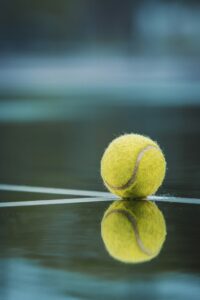The Science Behind Padel Balls: Understanding the Construction and Materials
3 min read
The Science Behind Padel Balls: Understanding the Construction and Materials
Playing padel is an absolute blast! Whether you’re a seasoned player or just getting started, one thing remains certain: the ball is a key element of the game. Have you ever wondered what goes into making a padel ball? What makes it bounce and spin in just the right way? Well, let’s dive into the fascinating science behind ball padel construction and discover the secrets hidden within!
The Core of It All
At the heart of every padel ball lies its core. This vital component determines the ball’s bounce and overall performance. The core of a padel ball consists of rubber and various additives, carefully mixed together to create the perfect combination of elasticity and durability.
Manufacturers meticulously analyze and tweak their rubber formulations to strike a balance between lively bounce and longevity. They employ advanced methods to determine the optimal density and resilience required for the core to deliver that satisfying “pop” when struck by your racket.
The Shell Game
Now, let’s move on to the outer layer – the shell of the ball. Just like the core, manufacturers put significant thought into the design and material selection for the shell. The shell must provide durability, but also allow for ideal ball spin and control.
Most padel balls feature a felt covering made of woven nylon or polyester material. This felt layer is responsible for the ball’s ability to grip the court surface, enabling players to apply spin and control the ball’s trajectory. The specific construction and quality of the felt can greatly impact a player’s ability to execute precise shots and add finesse to their game.
The Squeeze Test
Ever wonder why ball padel feels slightly different when squeezed compared to other types of balls? It’s all thanks to the pressurized air inside! Padel balls are pressurized before packaging to maintain their bounce and control. This internal pressure affects the way the ball feels upon contact with your racket and creates that distinctive padel sensation.
The level of pressurization helps determine the ball’s performance characteristics. Generally, higher-pressure balls tend to be livelier and faster, while lower-pressure balls offer better control and a more forgiving feel. Manufacturers often differentiate their products by specifying the recommended air pressure, allowing players to choose a ball that suits their gameplay style and preferences.
The Perfect Harmony
It’s important to note that padel balls are specifically designed to cater to the unique attributes of the sport. Unlike tennis balls, which require substantial durability to withstand the higher impacts of racket and court, padel balls prioritize precise control and spin capabilities.
As a result, ball padel manufacturers consistently strive to strike a perfect balance between bounce, spin, durability, and feel. With extensive research and testing, they continuously refine their products to enhance the overall playing experience and contribute to advancing the sport.
In Conclusion
Next time you step onto the padel court, take a moment to appreciate the craftsmanship and science behind the ball in your hand. Its construction, materials, and design are the result of years of expertise aimed at perfecting the game of padel.
Remember, the ball padel is where the magic happens – the bounce, the spin, and the thrill of the game. So, go out there, unleash your skills, and let the science of the padel ball elevate your game to new heights!






